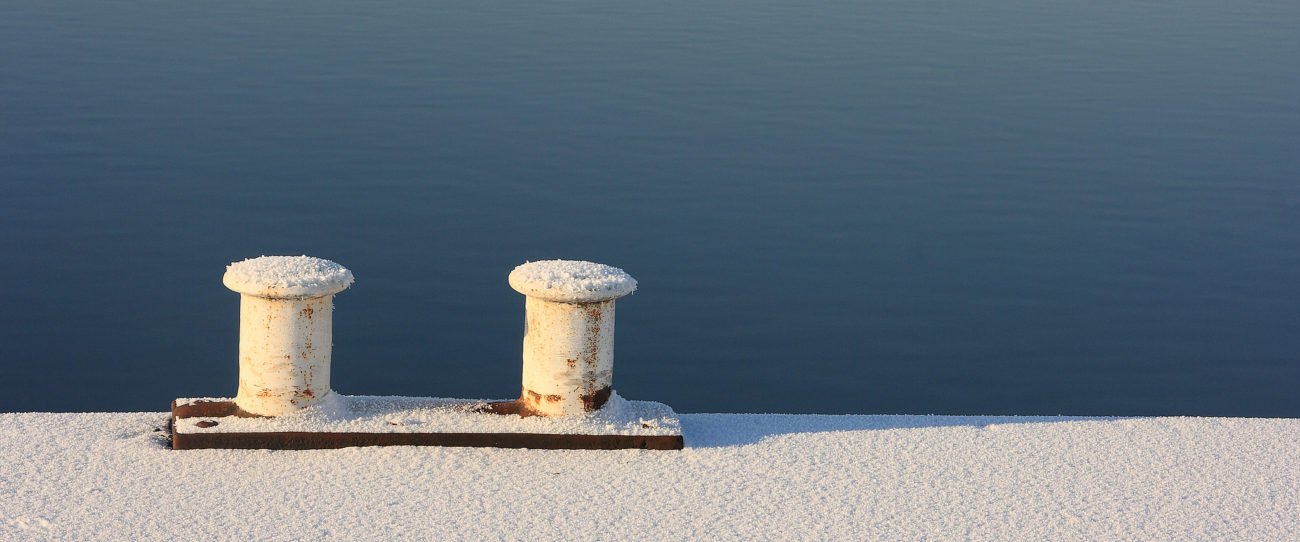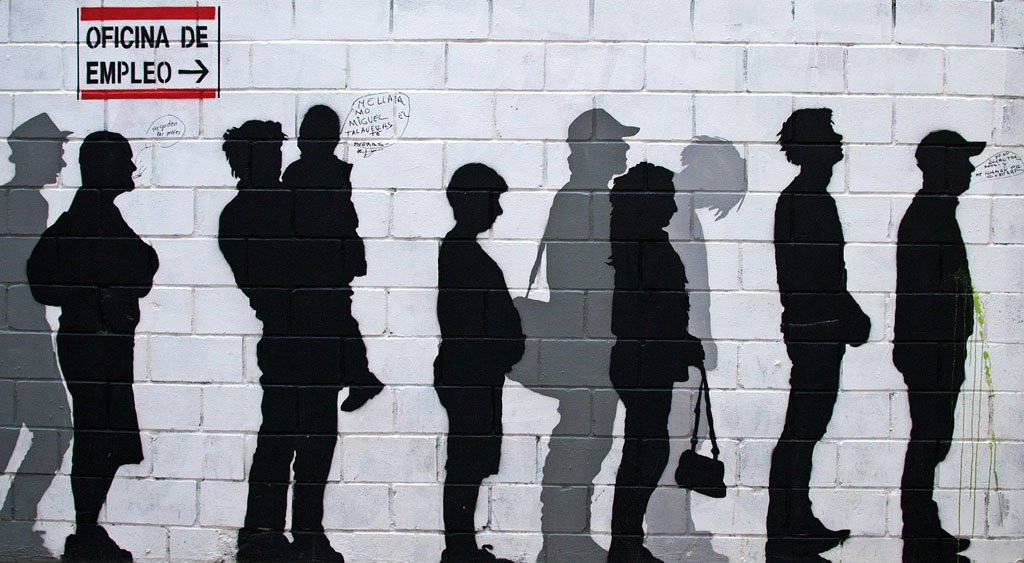Have you ever been to, ‘Wonderful Copenhagen,’ and stood and admired the ‘Little Mermaid’? If you had just raised your head a bit, you would be staring straight across at Refshaleoen and what once was, the mighty B&W shipyards.
Or to give it its full title, ‘Burmeister and Wain Copenhagen Shipyard,’ commonly known as B&W. Once it was the biggest employer in the Copenhagen area. It was the essence of being a real Copenhagener.
The shipyard workers where famous for their underground resistance to the German Occupation. and as far as labour relations where concerned. When the B&W men in blue went on strike, everybody went on strike.
It’s all gone now. Gone to the elephant graveyard for shipyards or Davy Jones’ locker repair yard. Or whatever it’s called in movies. It was sandbagged by some foolish American bankers. They’d loaned the shipyard money and rightly or wrongly they wanted it back. Pronto! They assumed the Social Democratic Danish government, would step in and save the day. This didn’t happen and the plug was pulled on a bit of Copenhagen history and back then, a large part of its identity.
It was never my intention to work in a shipyard or anywhere near the docks for that matter. My dad and some of my brothers had worked down the Dublin docks. The tools of their trade were wicked looking pirate hooks, that wouldn’t have been out of place in Treasure Island. Add to this, the biting cold winter wind that blew in from the Irish Sea and lanced right through your bones and you can see, it was no place for wussies. As a fully paid up member of the wussie union, it was not for me. I was heading for the sun. Sydney, Bondi Beach, Australia, the land of Wombats and Men’s Lib.
But as we know only too well, the best laid plans of Mice and Wombats can often go agley.
Which is why, I found myself at 06:00 one cold, black December morning, heading for the B&W Shipyards in the centre of Copenhagen. My train stopped at Osterport; time to disembark. My next objective was to run as quickly as my legs would carry me from Osterport station, down that long tree lined road towards Churchill’s park and finally Toldboden, where, with luck, I could catch the B&W ferry and sail across the harbour to the great assembly yards of B&W.
I could afford to miss one boat and still be early, for the 06.45 start. But it’s a hassle. Better by far to run like the clappers after the bodies I can see in the distance. There is a gap between my group of runners to the next who are in hectic movement. They had hopped off an earlier train and at this moment are ahead of the game.
The cold air turning our heavy breathing into a plume of steam like some unnatural human steam-engine. We go to warp speed and catch up just as they swing left and head down past the ‘Resistance War Museum,’ which also honours the memory of Anders Lassen, an SAS legend and Victoria Cross winner.
It’s normal walking speed now, or as normal as you get after coming down from warp factor 10.
The seven pointed star of, “A P Moller, Lord and Master of the Container Shipping Universe”, beckons in the distance, an exceedingly ugly office block, glorifying the power of the big buck. A final dash to the boat, whose lights we can see at the landing steps.
Beside us, the ferry boats from Holmen Danish Naval dockyard come and go, but the plug had already been pulled on Holmen. So they were winding down, while the B&W yards was booming.

In the summer time it was a pleasure to sail over to the yards. We’d sail around the Dannabrog, the Queen’s majestic old world yacht. Waving to the bored sailors, marching up and down on deck. Behind us, the beautiful city of Copenhagen, slowly coming to life in the early morning sun and in front, the giant cranes and assembly halls of B&W, like prehistoric monsters from another age. At Quay 10, an 80,000 ton double hull bulk-carrier gets the last finishing touches, before it goes out on sea-trials. That was always a good sight, it meant a bonus in prospect.
In winter the trip was a bummer. In the heavy pea-soup of a fog, that hangs down and covers everything, the incoming Bornholm ferry looks like a UFO, hovering over the water, the porthole lights are all you can see, as the giant ghost ship slides silently by. Other times it’s the snow, blinding you like only snow can. Or a heavy storm at sea pushes the cold oily black waters, back up into Copenhagen harbour. Then our little trip across the harbour becomes a roller-coaster ride of unimaginable fairground dimensions.
With no radar on-board or access to lifebelts, the ever present thought at the back of all our minds, is that one black skew-eyed morning, among howling winds and razor sharp sleet, we’d get swatted by an incoming coaster. How long would anybody last in that freezing water? Nobody ever spoke about it, we were B&W tough guys. It was never going to happen.
And this I have to remind myself was just going to work.
We run to the locker rooms and change into the blue boiler suits which more than anything was the trademark of the B&W ship-worker. The B&W canteen in the early mornings, had to be one of the wonders of Copenhagen. The work force was truly multi-racial and the list of attending nations was endless. This was the ultimate melting pot. East meets West meets the Middle East meets Africa meets Scandinavia.
But when we put on the boiler suit we were all the same, “Blues Brothers of B&W.”
There are experts who have said, the chances of communicating with an alien life form is very small. We would start with what we have in common. Which is nothing, and work up from there. The problem we had in the B&W melting pot was not so bad. We had lots in common. We lived on the same planet. We were all children of Adam and Eve, the people or the monkeys, depending on your belief system. We all lived in Denmark, country or a state of mind. And we all spoke a type of Danish. But thrown into the crucible of the B&W shipyard, the Danish language took an unmerciful hammering. One could still recognise the similarities between it and for example the inner-city Copenhagen Vesterbrogade variety. But from there to the Danish Queens, “New Year Speech,” was a quantum leap. The shipyard language was vibrant, alive, more a type of underground moustachioed revolutionary bandito cantina language. Full of nudge nudge, wink wink, say no more types of innuendo. Shrugs, quick hand chopping movements, colourful descriptions of various parts of the human anatomy.
Lots of sentences starting with, “Op i roven” (Up your ass) with appropriate hand gestures and continuing on and up into even more exotic stratospheres of the human anatomy.
I had my coffee break every morning with Murph an Irish guy, whose claim to fame was having played cricket for Manchester boys, and Graham, an English guy who had played tennis with Steed, (Actor Patrick Macnee) in California. Also Included in our group was a Fernando, a Russian speaking Spaniard who had been raised in the USSR. He told us that just before Franco had taken over in Spain, 6.000 children of the Republican forces were sent away to Russia by their families to keep them out of the hands of Franco and get them raised as true communists. There they stayed right throughout World War 2. Fernando was fully brainwashed by the system and would not hear tell of any criticism of Mother Russia or the peace loving Soviet Socialistic Republics.
One day Murph had injured his leg and was limping badly. “Daw-lee Been?” (meaning a bad leg,) says Fernando, pointing at the Murph’s leg.
“Nej,” (No) says Murph, “Daw-lee Parton”
Fernando turned to me totally confused, “Hvaa…Daw-lee Par-Don?”
I tried to explain, it was a famous American female country and western singer, with gigantic silicon mammary glands, but it didn’t seem to clarify the situation at all. Fernando went away still very confused about what bad legs and gigantic American mammary glands had in common.

I remember on my first day, driving down from the port-gates, on the tractor-bus, to the dry dock. They had a building there, which was full of wooden toolboxes, stacked up, row after row. The thought that raced through my cold numb brain was, “Welcome to Castle Dracula.” They did look like coffins stacked up in the cellar of, “you know who.” Of course I didn’t enlighten my fellow comrades as to the deep inner thoughts of their newly started Blues Brother.
The inside of a new 80.000 ton bulk carrier was to put it mildly, a very religious experience. To go from the coffins of Castle Dracula, in driving snow, with a temperature hitting minus 25 Degrees, into a vast silent cathedral-like environment, had a profound effect on me. It was a place of bright bright lights and dark dark places. I suppose, with the scaffolding and the hanging lights it could also have been mistaken for some enormous Egyptian tomb excavation.
(Movie title perhaps, “Indiana Sven and the Search for the Holy Bulk-Carrier,”)
But it was out of the bitter cold. And I was sold.
I had a new identity I had become a born again B&W Blues Brother. The shipyard was a hard and sometimes a very dangerous place to work.
Hard hats where needed. As you could easily end up with a dropped glowing bolt from on high, going right through your brain. But it was also an amazing place to have worked, a place where old Commie die-hards were still running the shipyard union, still genuflecting to the works of Karl & Lenin, along with the new breed, of slick negotiating academic technical college educated types with their new world socialist business dogma, “The company is allowed to make a profit.”
You could always tell who was who, by the boiler suits they wore. The Stalinist commies went for the dirty, well-lived in, ripped and torn, recycled container city look. The new age socialist academics, where more for the crisp and clean well ironed look. None of these permanent union officials ever done any manual shipyard work, but they had to look the part, and for the most part did a good job.
In the canteen we would gather to hear their latest wage negotiation report. If we didn’t like it, we would all start banging tables and shouting that universal sheep mantra of objection.
“Baaaaaaaaaaaaaaah,”
We would greet newbie workers with a rendition of Pink Floyd’s, ‘Welcome to the Machine’, which was fun.

The Gammel Svejsehall (The Old Welding Hall), where I spent many years welding and building sections is now a modern museum. There is a metal festival every year called Copenhell, held outside the giant assembly hall, where I had once frozen my ass off, welding double hull sections of the bulk carriers that sailed the seven seas.
The giant assembly hall was used to stage the very impressive 2014 Eurovision song contest. You can now get street kitchen food and expensive craft beer in the local foodie markets.
The Danish rocket society are launching rockets from another area of the yard. Will they start building space-craft to the stars? A spaceship-yard in the centre of Copenhagen sounds kinda cool.
B&W, the heartbeat of the Copenhagen worker, closed its gates in the spring of 1996. Everybody, including the American banks, received all their money. Such is life.
Cover image courtesy of Fraser Downie via Flickr








